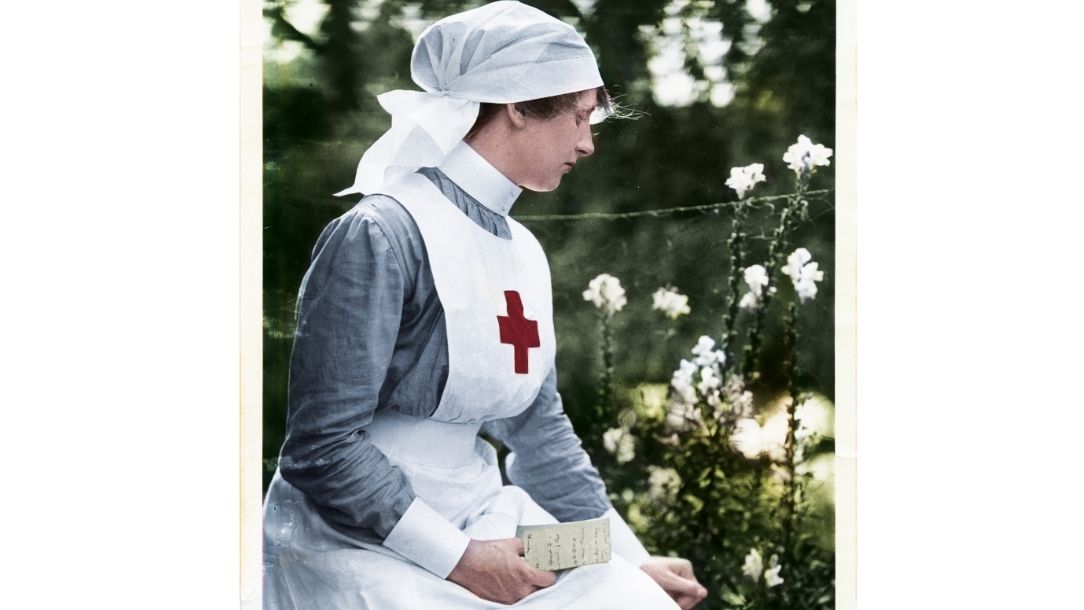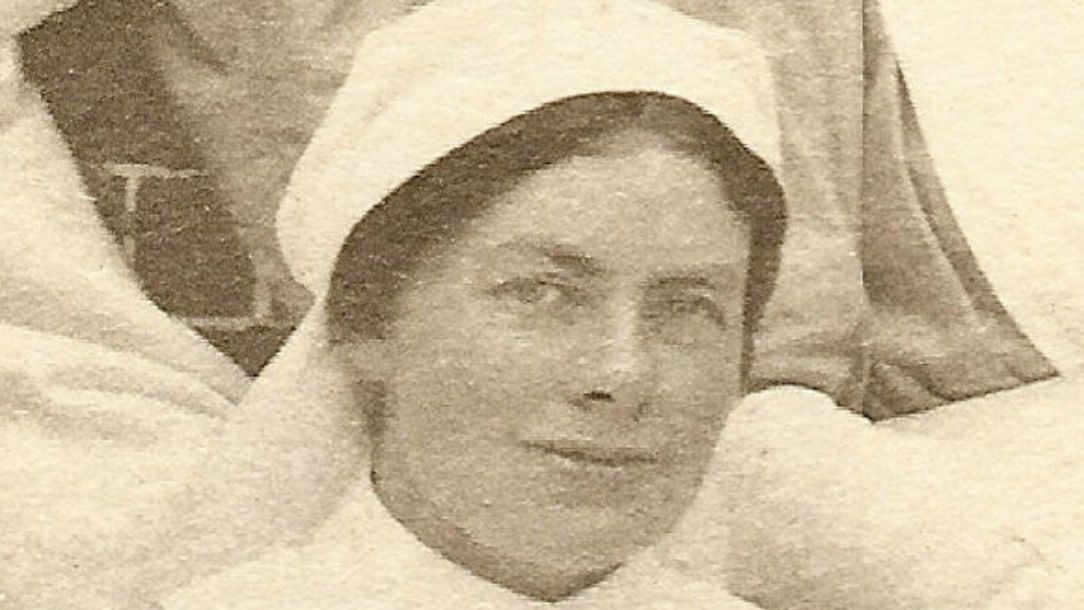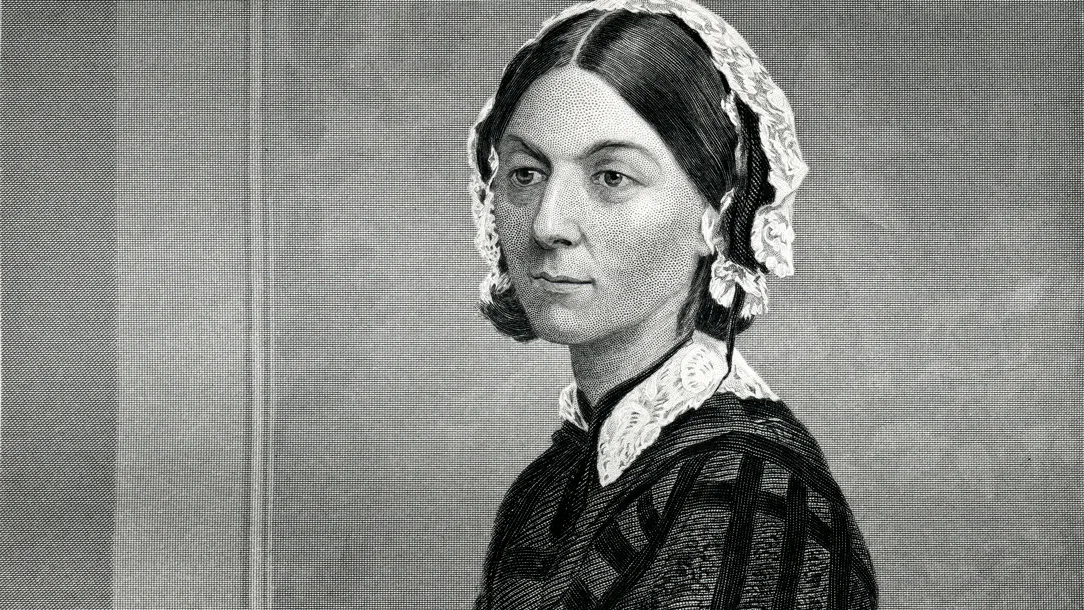Remembering Edith Cavell: a brave First World War nurse
At 7 o’clock in the morning on 12 October 1915, a Red Cross nurse, Edith Cavell, was killed by a firing squad.
She was shot by 16 German soldiers. Her crime? Helping the Allied servicemen she was treating escape to safety.
Who was Edith Cavell?
Born in Norfolk in December 1865, Edith Cavell was the eldest of four children. Her father was vicar at Swardeston, a village near Norwich where she grew up. Educated in the UK, Cavell spent five years working as a governess in Belgium, before returning home in 1895 to care for her father when he became ill.
Nursing her father back to health is said to be what inspired Cavell to become a nurse. In 1896, she began her nursing training at the Royal London Hospital in Whitechapel. Her tutor remarked that she was often late and was not a nurse who could be relied upon. However, Edith proved her wrong when she moved to Belgium and began to pioneer new nursing techniques.
Edith Cavell's inspiring war work
When the First World War broke out, Edith Cavell returned to England for a holiday in Norfolk. She declared: "At a time like this, I am needed now more than ever", before heading back to the front line in Belgium to continue her work.
Here, Cavell worked in hospitals treating all soldiers who needed help, regardless of their nationality. The Red Cross journal for staff and volunteers reported in November 1915: "She might have saved herself and left Brussels when the Germans entered, but she elected to stay at her post.
"She remained, and subsequently assisted in nursing the wounded, including Germans themselves."
"At a time like this, I am needed now more than ever", Edith Cavell, 1914
Smuggling soldiers
Edith soon began to work with the Belgian underground intelligence network, La Dame Blanche, helping to smuggle more than 200 Allied soldiers into neutral Holland.
Knowing how dangerous this was, Cavell kept her work secret from her fellow nurses who served under her.
However, the Germans became suspicious. After a long investigation, Cavell was tried for treason with 35 others in August 1915.
Most were sentenced to hard labour – but not Cavell. Despite an international plea for mercy, Edith Cavell was shot dead by a firing squad two months later. She was 49 years old.

A crowd gathering for the unveiling ceremony around the memorial statue for Edith Cavell in March, 1920
Praise for Edith Cavell from the Prime Minister
The Prime Minister Herbert Henry Asquith asked: “what year in our history has done more to justify our faith in the manhood and womanhood of our people?
"It has brought us, as we cannot at this moment forget, the imperishable story of the last hours of Edith Cavell [...] and in this United Kingdom and throughout the Dominions of the Crown there are thousands of such women, and a year ago we did not know it[...].
"Thank God we have living examples of all the qualities which have built up and sustained our Empire. Let us be worthy of them, and endure to the end."

The bronze medal made by Fonson and Sons featuring portraits of Edith Cavell and Marie Depage
Edith Cavell's death captured the imagination of millions
The night before Edith's execution, it's said that she told a minister, "Patriotism is not enough. I must have no hatred or bitterness to anyone." Edith Cavell's last words were, "Ask Father Gahan to tell my loved ones later on that my soul, as I believe, is safe and that I am glad to die for my country."
Her patriotism and bravery were prevailing up until the day she died. These values have lived on in her legacy as she continues to inspire others.
After her death, Edith Cavell was buried at Norwich Cathedral. The Red Cross journal at the time reported that Edith Cavell was “a brave and patriotic lady, a distinguished member of the nursing profession who, at the very most, had done nothing worthy of death."
They weren’t wrong. A memorial statue for Edith Cavell was built by Trafalgar Square for her and her extraordinary life. In 2015, events such as concerts and exhibitions took place to mark the centenary of her death. And the Royal Mint created 500 £5 coins featuring her portrait.
The Red Cross remembered her with a bronze medal after the war showing portraits of Edith and Marie Depage. Marie Depage was married to Doctor Antoine Depage, who Edith worked for in Belgium, and was killed in the sinking of the Lusitania. On the back of the medal, it says: 1915 REMEMBER!
“Her patriotism, courage, and dignity have caught the imagination of millions and will be commemorated for ages.” Red Cross Journal
- Did your family volunteer during the war? Find your relatives or discover Red Cross hospitals from your local area by browsing our collection of volunteer cards from the First World War.
- Please help us continue our work for many generations to come find out about leaving a gift in your will to the British Red Cross
Read more

Letters from a First World War nurse
These letters from our archive show the challenges of nursing during difficult times, as well as some of the lighter moments.

The heroic women of WW1: a nurse's diary
Peggy Arnold was a WW1 nurse serving on the frontline. Here we celebrate her bravery, and the bravery of volunteers like her.

The legacy of Florence Nightingale, the first professional nurse
Her influence is still felt more than a century after her death


